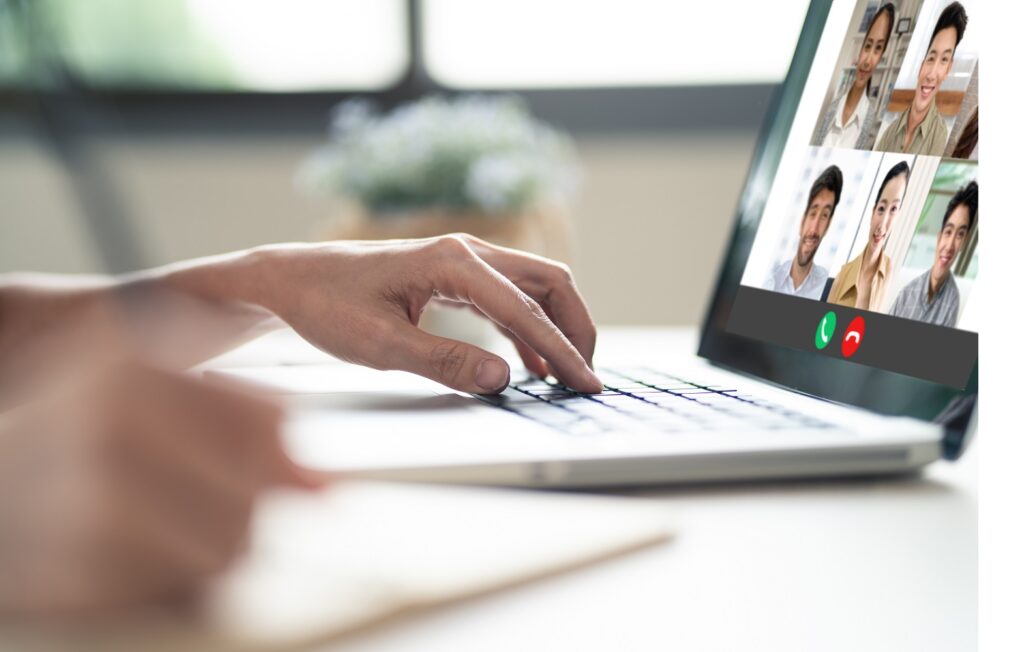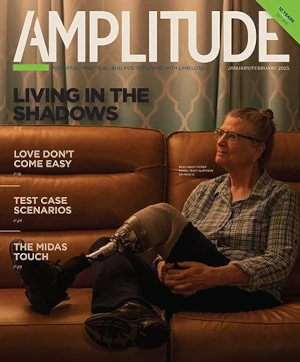Whenever there’s a dip in the COVID infection rate and social-distancing rules start to ease, Leslie Green detects a current of anxiety within her amputee support communities. Members implore her, in texts and emails and Zoom conversations: Promise us you’ll keep leading virtual sessions after the pandemic ends.

Her answer is unequivocal: Online connections are here to stay.
“Virtual sessions will always be a component of the communities I facilitate,” says Green, a bilateral amputee who works as a community care coordinator for Hanger Clinics. “I’ll integrate them with regular sessions when it’s safe to meet in person again, but this [online format] is not going away.”
That will come as a huge relief to amputees who’ve come to depend on Green’s virtual support communities for social connection, emotional support, and problem-solving information during COVID. Beginning with a single weekly session for her Twin Cities support group back in March, Green has scaled up her program to include multiple virtual sessions a week, with sponsors that include Hanger and the Amputee Coalition. She draws participants from all over the country and serves various specialized populations—there are men’s groups, women’s groups, caregiver groups. There’s even a companion blog and a podcast to cast the net as wide as possible.
Green is hardly the only amputee support group leader to roll out virtual meetings successfully. But few have tapped their potential to greater effect.
“People think of technology as cold and sterile and isolating,” says Green. “COVID forced us to rethink how we’re using technology, to unplug the system and plug it back in with intentionality. For a society that’s so dependent on technology, we don’t always use it to meet people’s needs.”
By using technology to create a welcoming atmosphere for amputees during the pandemic, Green and other faciltiators have helped rewrite the rules for support communities going forward. Here are three big reasons virtual support communities for amputees are here to stay.
1. Lower Barriers to Participation
“I’ve found an unreached component of this community by offering virtual meetings,” Green says. She estimates that roughly 150 amputees are regular, committed participants, a group that’s many times larger than the one or two dozen people who’d show up for monthly meetings of her Twin Cities support community.
The teleconferencing platform enables people to overcome all kinds of obstacles, particularly travel-related issues that include distance and poor weather. (The latter is routinely a factor in Minnesota.) “Another issue is that amputees often find themselves out of their legs because of pain,” says Green. “We’d have somebody miss a session, and we’d find out later they were back in the hospital for one reason or another.”
All those deterrents will continue to exist long after the pandemic eases and social distancing recedes—which explains why people are so relieved to learn that Green’s virtual support communities will outlast the pandemic. “This platform travels with you,” she says. “You can log in from anywhere. You can connect with the community from anywhere. And what a comfort that is.”
2. Less Anxiety for New Members
“Put yourself in the position of a new amputee,” says Green. “You’re in such a vulnerable position. You’ve become a member of a club you never wanted to join. When you approach that support community for the first time in person, you take a deep breath and you sit stoically in a chair and you try to hold it together. You’re surrounded by strangers, you’re unsure of yourself, and it’s just incredibly difficult.” Many people won’t to expose themselves to that experience, says Green. “The anxiety and fearfulness make them feel out of control, and they already feel out of control because they’ve lost a limb.”
Virtual platforms, by contrast, offer multiple layers of self-protection. “I can mute my video and mute my audio and just listen,” says Green. “I can just listen and take the temperature of the room, without becoming self-conscious about how I feel or how I look. I can feel completely safe.”
Green actively encourages first-time guests to take advantage of those features until they feel completely comfortable revealing themselves to the group. She also typically holds a one-on-one session with new members prior to their first group meeting, so she can walk them through the format and ensure they’re fluent in the technology.
“I can even chat with someone privately during a meeting,” Green adds. “I can ask how they’re doing and make sure they’re okay, and the rest of the group doesn’t even know about it. That’s another beautiful advantage of a virtual environment.”
3. Greater Frequency and Variety
The day after Minnesota’s stay-at-home-order was issued back in late March, Green immersed herself in the details of videoconferencing platforms. After settling on a solution that balanced user-friendliness with HIPAA compliance and robust features, she convened a special session of her regular support community (known as Balance) to test out the format. After everyone got the hang of the new platform, Green asked the group how often they’d like to meet going forward. She was prepared for a mixed response, but the participants voted emphatically to shift meetings from monthly to weekly.
The greater frequency helped members fill schedules that had been abruptly emptied by the pandemic. It also forced Green to get more creative with programming. Her monthly in-person meetings almost always revolved around a guest speaker, typically an expert on prosthetic technology, physical therapy, health, or a related field. The weekly cycle allowed her to branch out into new territory.
“I schedule speakers every other week,” says Green. “They touch on all aspects that related to amputee life. I’ve had people get into the details of componentry for prosthetic limbs. I’ve brought in motivational speakers. It runs the gamut. On the alternate weeks, we’ll just get together for something less serious. We’ve played Pictionary—if you think you’re a bad artist, try drawing with your computer mouse. We did a virtual beach party. We always find something fun to do.”
Ultimately, the weekly schedule has created space for a more well-rounded approach to community building. “It isn’t just about prosthetics,” Green says. “It’s about the whole person for their whole life. You can’t imagine how incredible that is.”
While technology has opened the doors to many people who couldn’t or wouldn’t attend an in-person meeting, barriers still exist. Green is actively looking for ways to include individuals who don’t own a computer, lack broadband Internet access, or are otherwise unable to log in to a virtual session.
As a stopgap, she has occasionally positioned her iPad camera in front of her computer screen, and then used Facetime to enable individuals to view the session through their phones. “It’s not perfect,” Green says. “But it’s better than nothing. I’m thinking outside the box. If there’s a way to meet a need and include someone in our community, we’re going to find it.”



